Wireless Positioning Technologies and Applications
Contents v
Preface xi
Chapter 1 Introduction 1
1.1 Fundamentals and Terms
1.2 Applications
1.3 Overview of Distance Measurement and Location Methods
1.4 Organization of the Book
References
Chapter 2 Basic Principles and Applications 13
2.1 Signal Parameters
2.2 Basics of Location
2.3 Navigation Systems
2.4 Conclusions
References
Chapter 3 Spread Spectrum 53
3.1 Principles of Direct Sequence Spread Spectrum
3.2 Acquisition
3.3 Tracking
3.4 Measurement of Elapsed Time
3.5 Propagation Time Resolution
3.6 Conclusions
References
Chapter 4 Time Transfer 95
4.1 Time Transfer Basics
4.2 Calibration Constants
4.3 Range Uncertainty
4.4 Ranging Procedure in Wireless Network
4.5 Conclusions
References
Chapter 5 Multicarrier Phase Measurement 107
5.1 Principle of Multicarrier Phase Measurement
5.2 Phase Slope Method
5.3 Phase Error Versus Signal-to-Noise Ratio
5.4 Estimation of Distance Variance Versus SNR
5.5 Multipath
5.6 System Implementation
5.7 OFDM
5.8 Conclusions
References
Chapter 6 Received Signal Strength 139
6.1 Advantages and Problems in RSS Location
6.2 Propagation Laws
6.3 RSS Location Methods
6.4 Conclusions
References
Chapter 7 Time of Arrival and Time Difference of Arrival 161
7.1 TOA Location Method
7.2 TDOA
7.3 Performance Impairment
7.4 Conclusions
References
Chapter 8 Angle of Arrival 189
8.1 Triangulation
8.2 Antenna Performance Terms and Definitions 191
8.3 Finding Direction from Antenna Patterns
8.4 Direction-Finding Methods
8.5 Electronically Steerable Beam Antennas
8.6 ESPAR Antenna Array
8.7 Conclusions
References
Chapter 9 Cellular Networks 223
9.1 Cellular Location-Based Services
9.2 Cellular Network Fundamentals
9.3 Categories of Location Systems
9.4 GPS Solution
9.5 Cell-ID
9.6 Location Technologies Using TDOA
9.7 Angle of Arrival
9.8 Received Signal Strength and Pattern Recognition
9.9 Problems and Solutions in Cellular Network Positioning
9.10 Handset-Based Versus Network-Based Systems
9.11 Accuracy Factors
9.12 Conclusions
References
Chapter 10 Short-Range Wireless Networks and RFID
10.1 WLAN/WiFi
10.2 WPAN
10.3 RFID
10.4 Conclusions
References
Chapter 11 Ultra-wideband (UWB)
11.1 Telecommunication Authority Regulations
11.2 UWB Implementation
11.3 IEEE 802.15.4a
11.4 Dealing with Multipath and Nonline of Sight
11.5 Conclusions
References
Bibliography 289
List of Acronyms and Abbreviations 293
About the Author 297
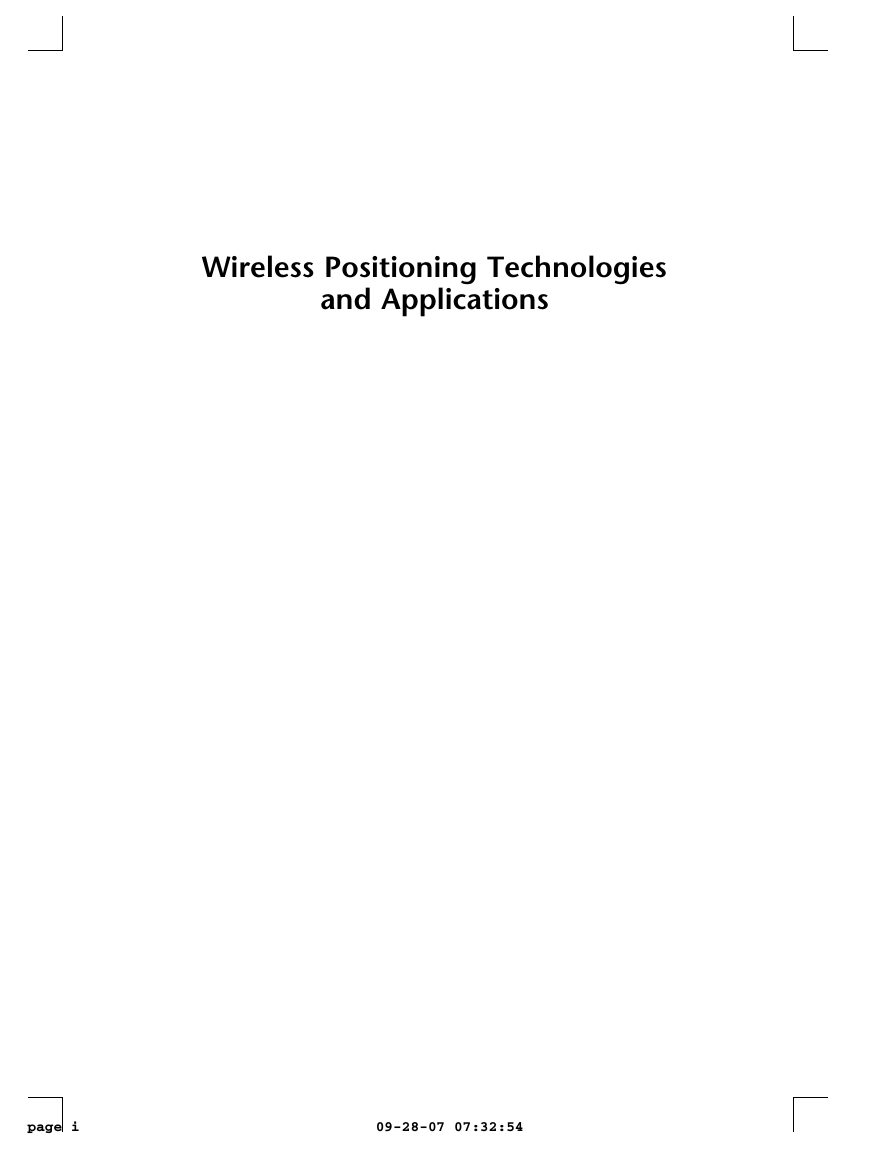

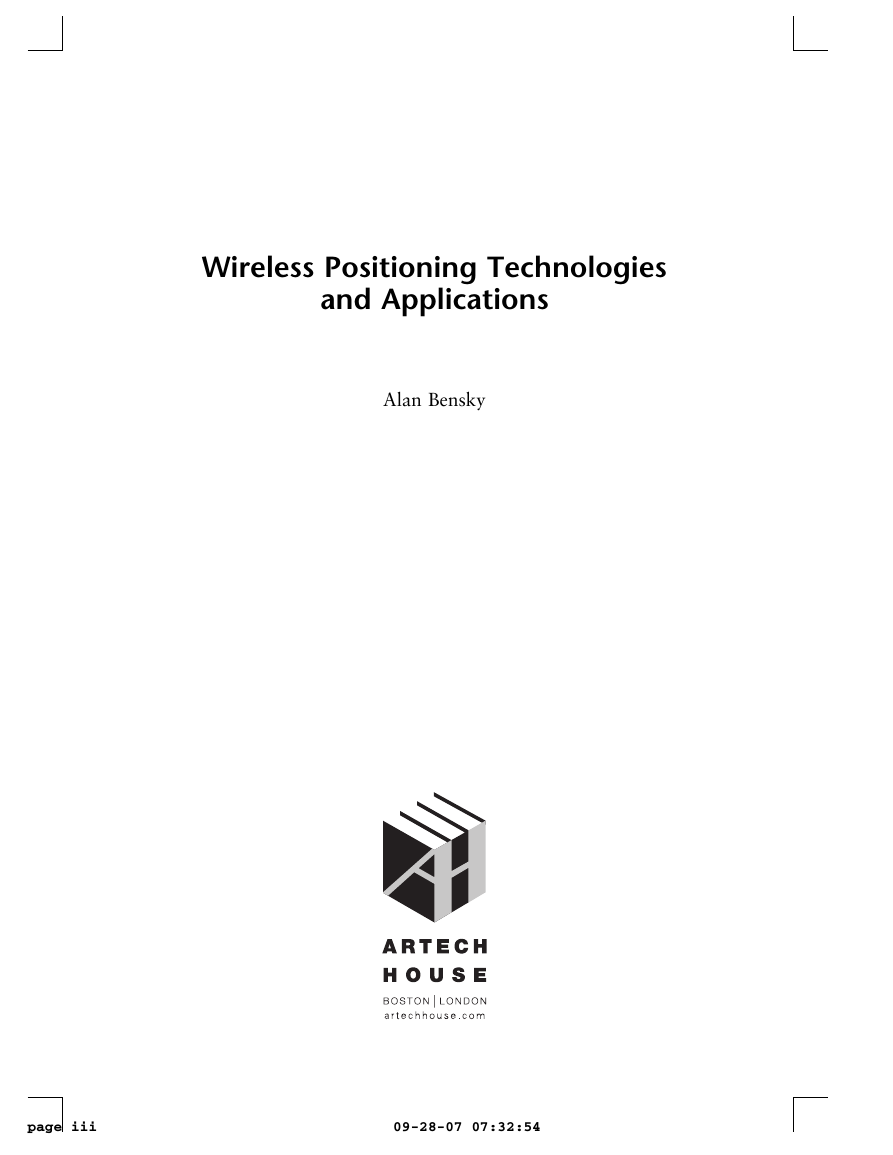
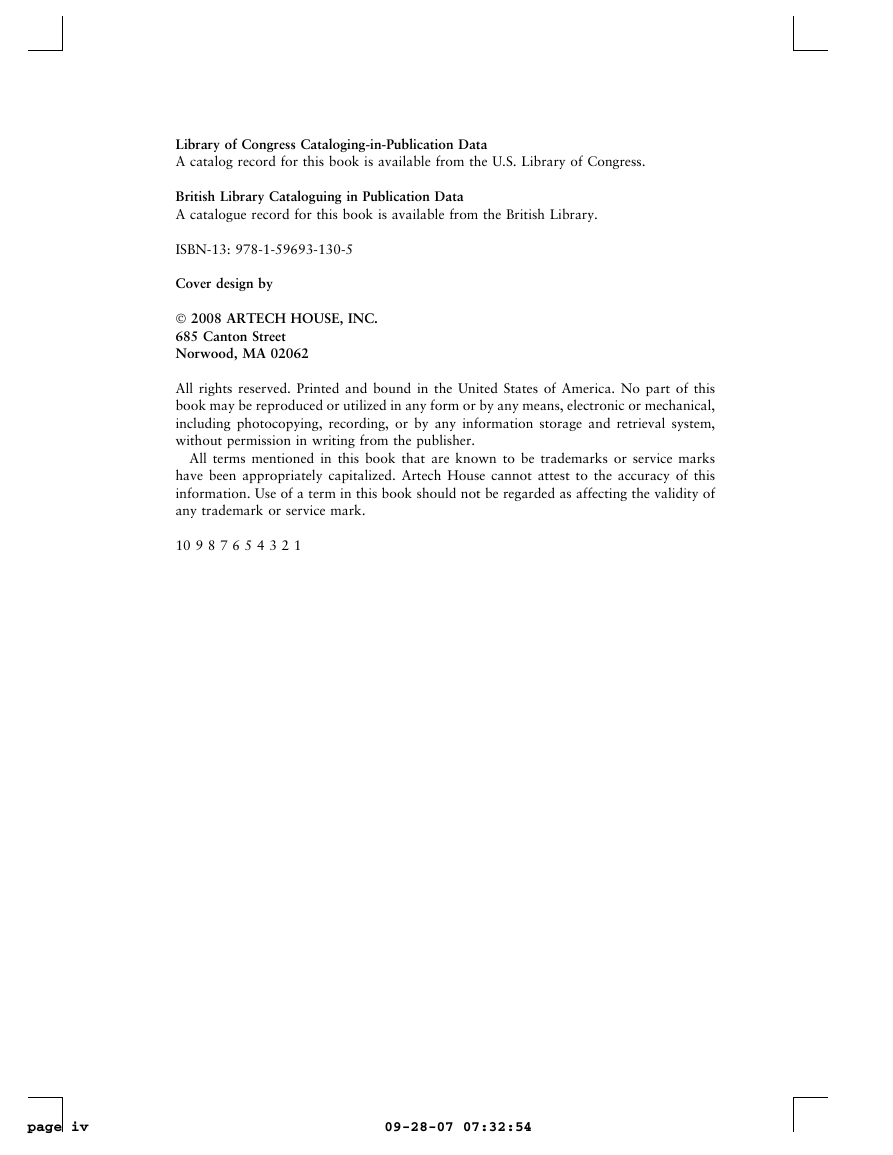

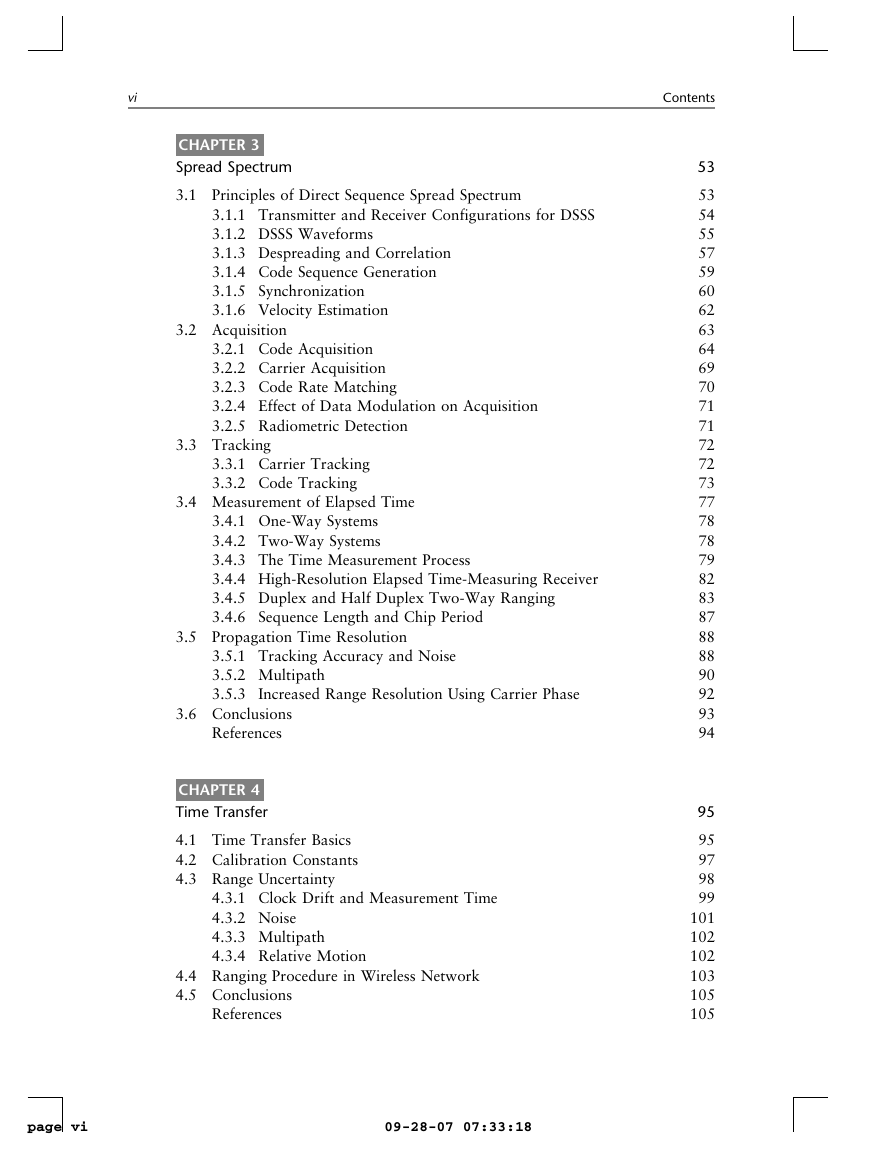
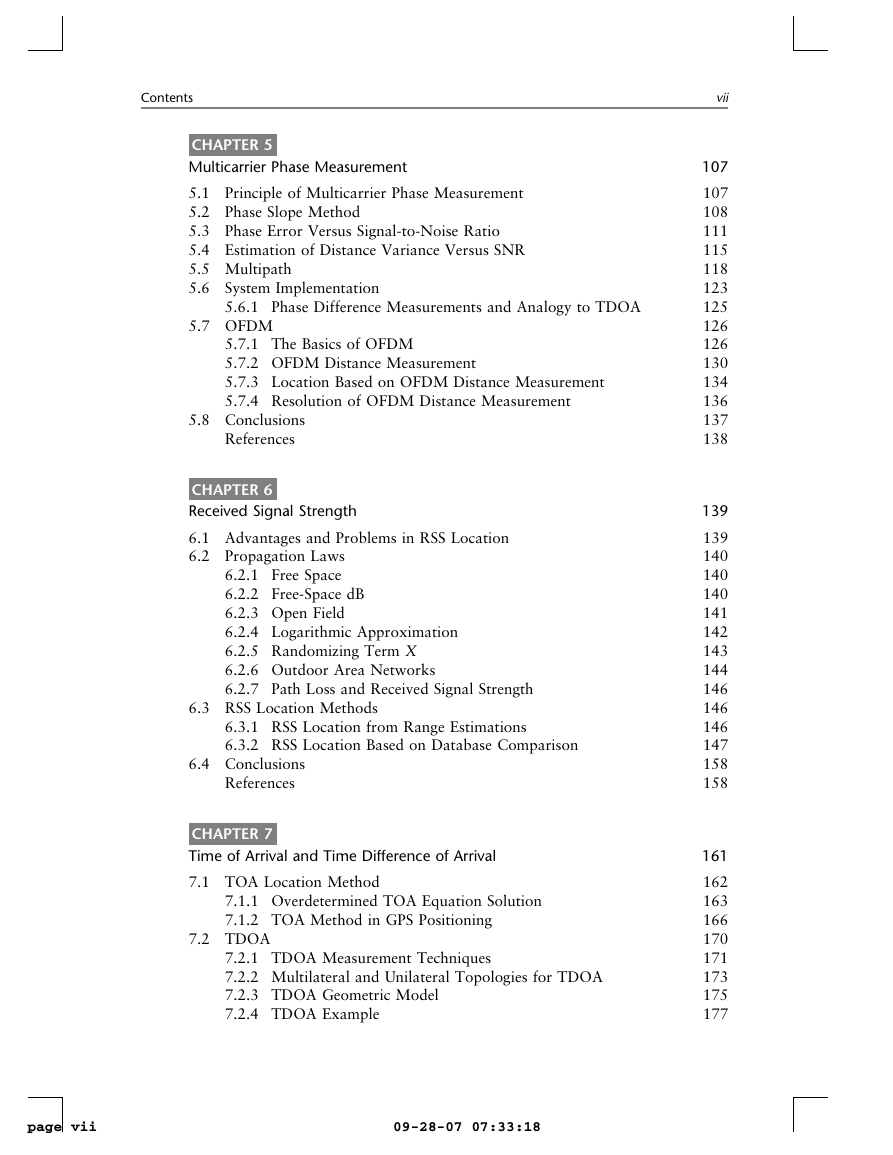









 2023年江西萍乡中考道德与法治真题及答案.doc
2023年江西萍乡中考道德与法治真题及答案.doc 2012年重庆南川中考生物真题及答案.doc
2012年重庆南川中考生物真题及答案.doc 2013年江西师范大学地理学综合及文艺理论基础考研真题.doc
2013年江西师范大学地理学综合及文艺理论基础考研真题.doc 2020年四川甘孜小升初语文真题及答案I卷.doc
2020年四川甘孜小升初语文真题及答案I卷.doc 2020年注册岩土工程师专业基础考试真题及答案.doc
2020年注册岩土工程师专业基础考试真题及答案.doc 2023-2024学年福建省厦门市九年级上学期数学月考试题及答案.doc
2023-2024学年福建省厦门市九年级上学期数学月考试题及答案.doc 2021-2022学年辽宁省沈阳市大东区九年级上学期语文期末试题及答案.doc
2021-2022学年辽宁省沈阳市大东区九年级上学期语文期末试题及答案.doc 2022-2023学年北京东城区初三第一学期物理期末试卷及答案.doc
2022-2023学年北京东城区初三第一学期物理期末试卷及答案.doc 2018上半年江西教师资格初中地理学科知识与教学能力真题及答案.doc
2018上半年江西教师资格初中地理学科知识与教学能力真题及答案.doc 2012年河北国家公务员申论考试真题及答案-省级.doc
2012年河北国家公务员申论考试真题及答案-省级.doc 2020-2021学年江苏省扬州市江都区邵樊片九年级上学期数学第一次质量检测试题及答案.doc
2020-2021学年江苏省扬州市江都区邵樊片九年级上学期数学第一次质量检测试题及答案.doc 2022下半年黑龙江教师资格证中学综合素质真题及答案.doc
2022下半年黑龙江教师资格证中学综合素质真题及答案.doc